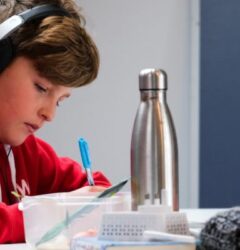
As classrooms evolve into a blend of physical and digital spaces, educators are reimagining how students learn from one another. One approach that’s proving highly effective is peer tutoring — a learning model where students help fellow classmates understand concepts, solve problems, and build confidence. In hybrid environments, where interaction happens both in person and online, peer tutoring is emerging as a powerful tool to boost engagement, collaboration, and academic success.
What Is Peer Tutoring?
Peer tutoring involves students teaching or supporting their peers under the guidance of an instructor. Unlike traditional teacher-led instruction, it encourages active participation and reinforces learning through explanation and discussion. Tutors reinforce their own understanding while learners benefit from relatable, peer-level explanations. In hybrid classrooms — which combine in-person sessions with online learning — peer tutoring bridges the gap between independent study and interactive collaboration.
Why Peer Tutoring Works in Hybrid Settings
Hybrid classrooms can sometimes make students feel disconnected, especially when part of the learning happens remotely. Peer tutoring counteracts this by creating a sense of community and shared responsibility. Online discussion forums, breakout rooms, and collaborative tools allow students to tutor and support each other regardless of location. Meanwhile, in-person interactions strengthen bonds and provide real-time feedback. The balance between online flexibility and face-to-face connection enhances comprehension and motivation.
Academic and Social Benefits
Peer tutoring doesn’t just improve grades — it builds confidence, empathy, and communication skills. Tutors develop leadership and critical thinking abilities as they explain complex topics, while learners gain encouragement in a more relaxed environment. Studies show that peer-supported learning helps students retain information longer and fosters deeper understanding. In hybrid settings, this model ensures that learning continues seamlessly across digital and physical spaces.
Implementing Effective Peer Tutoring
For peer tutoring to succeed, structure is key. Educators can pair students strategically based on strengths, learning styles, or interests. Setting clear objectives and using online tools such as shared whiteboards, group chats, and video calls ensures that tutoring sessions remain focused and productive. Regular check-ins from instructors maintain accountability and provide support when needed.
Conclusion
Peer tutoring in hybrid classrooms demonstrates that learning is not just about content — it’s about connection. By empowering students to teach and support each other across digital and physical platforms, schools create a more inclusive and collaborative learning culture where everyone benefits.






